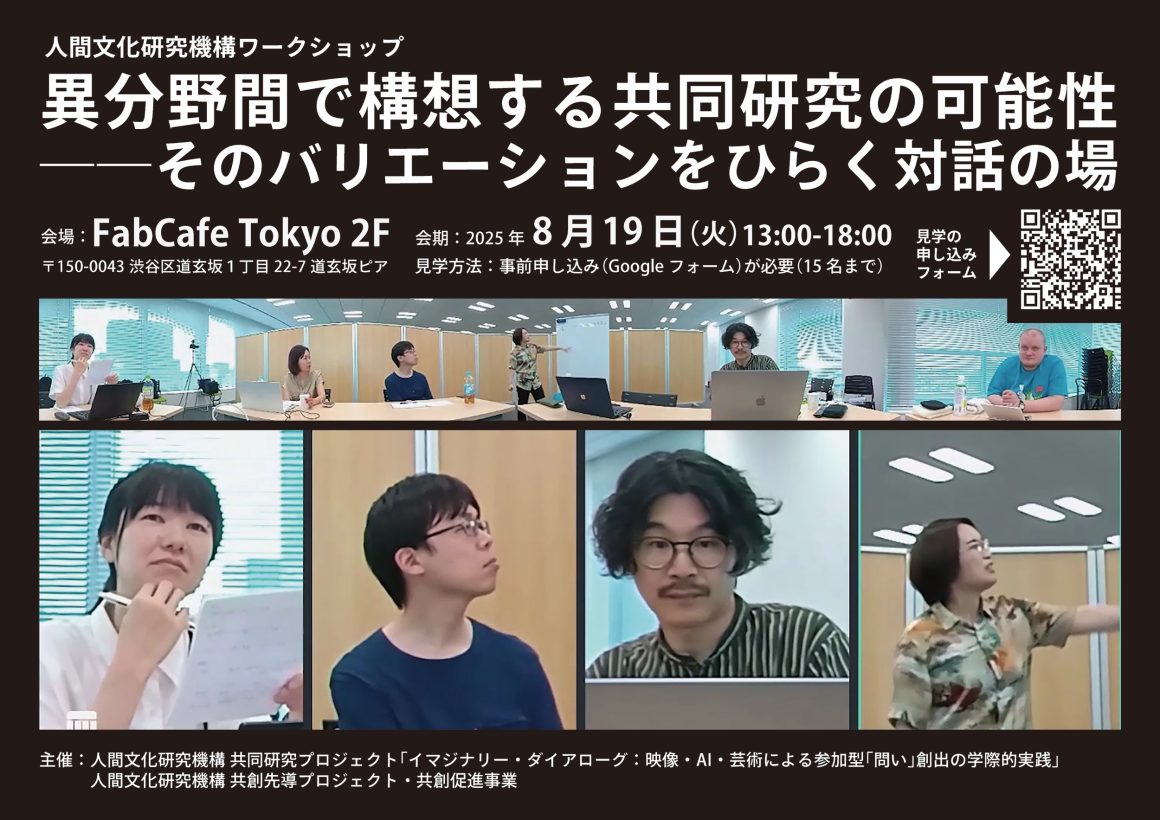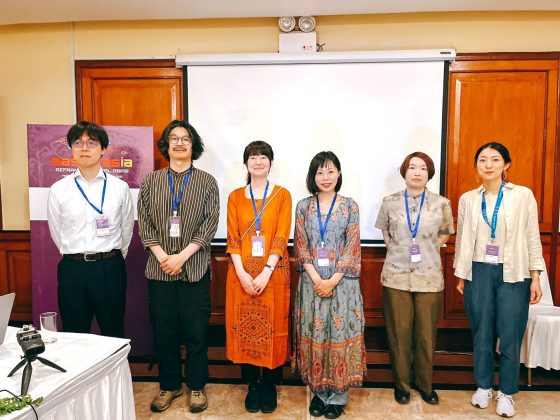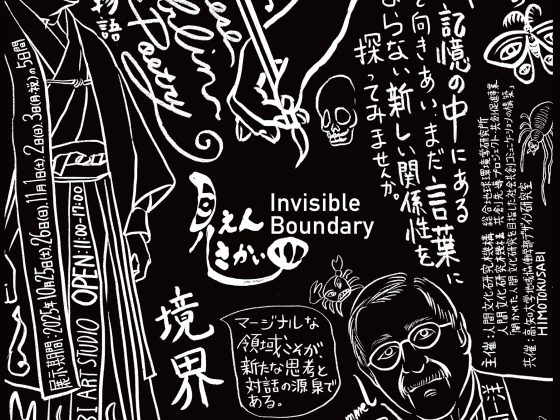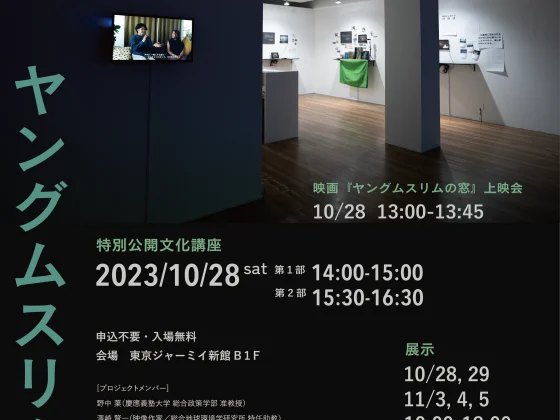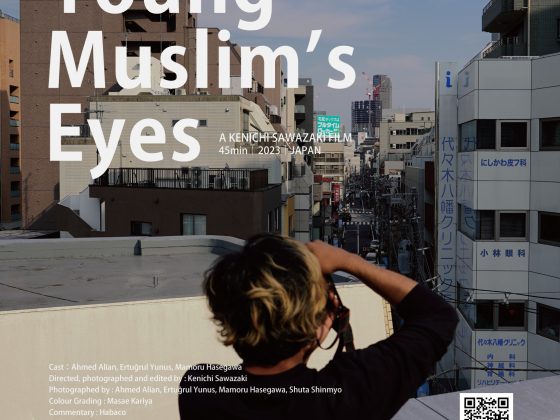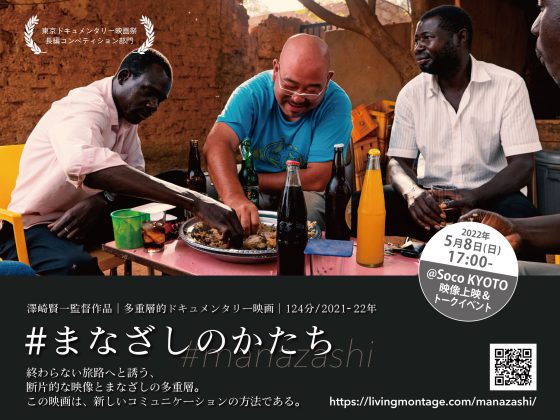National Institutes for the Humanities (NIHU) Workshop: “Envisioning Possibilities for Interdisciplinary Co-Research — A Dialogic Space for Opening Variations”
Following the July workshop in Kyoto co-hosted by RIHN and Kyushu University, “Exploring the Potential for Co-Creation by Practitioners Bridging Art and Research” (https://www.chikyu.ac.jp/rihn_e/events/detail/290/), we have held the NIHU workshop “Envisioning Possibilities for Interdisciplinary Co-Research — A Dialogic Space for Opening Variations” at FabCafe Tokyo in Shibuya on Tuesday, August 19, 2025.
This workshop is organized by the collaborative research project “Imaginary Dialogue: An Interdisciplinary Practice of Participatory ‘Question’ Generation through Video, AI, and Art,” initiated mainly by Liberal Arts Communicator at the NIHU.
Flyer download:
https://texsite.net/wp/wp-content/uploads/2025/08/flyer250811.pdf
— Event Details —
NIHU workshop “Envisioning Possibilities for Interdisciplinary Co-Research — A Dialogic Space for Opening Variations”
Date & Time: Tuesday, August 19, 2025, 13:00–18:00
Venue: FabCafe Tokyo
Organizers: NIHU Collaborative Research Project “Imaginary Dialogue: An Interdisciplinary Practice of Participatory ‘Question’ Generation through Video, AI, and Art”; NIHU Co-creation Research Projects / Knowledge Co-creation Projects
Overview:
What kinds of “questions” emerge when different specialties meet?
This workshop is part of the collaborative research project “Imaginary Dialogue: An Interdisciplinary Practice of Participatory ‘Question’ Generation through Video, AI, and Art” (Project Lead: Kenichi Sawazaki; from FY2025), organized by Humanities Communicators* at the National Institutes for the Humanities (NIHU). Through moving images, dialogue, and artistic expression, the project experimentally visualizes processes for generating cross-disciplinary questions and explores the possibilities of transdisciplinary knowledge.
In this workshop, researchers spanning diverse domains—natural sciences, the humanities, social sciences, and the arts—will gather in a conceptual dialogic space. Participants will bring yet-to-be-realized ideas for collaborative research, expand them improvisationally, and probe new lines of interest and forms of questioning.
Because this workshop is run in a semi-closed format, advance registration is required for observation. The aim is not to present completed outcomes but to value “conceptual dialogue” that remains in a state of uncertainty—where direction and conclusions are not yet visible and where drift and dispersion are embraced. Discussions may at times miss each other, go off on tangents, or end without converging into a single question. We therefore ask that observers be those who understand the experimental and indeterminate nature of the event, are interested in the “in-the-making” processes of question formation, and can welcome that indeterminacy as part of the experience.
On the day, based on participants’ specialties and prior work shared in advance, we will begin from brief presentations of collaborative research ideas prepared by each researcher beforehand. From there, participants will share, on the spot and improvisationally, questions and concepts that emerge from the flow of dialogue. What we wish to value here is not feasibility analysis but the conceptual crossing of thought—“this kind of research might also be possible.” We believe the contingencies in which one question attracts another, and new possibilities arise from unexpected combinations, are precisely the seeds of future interdisciplinary research.
We call this process of reflective, conceptual dialogue “Imaginary Dialogue.” It is a methodological experiment that deliberately remains at the level of conception rather than moving quickly into execution. By lingering in the “margins” where thought and sensation waver—without rushing to outcomes or implementation—we seek to open up the possibilities of dialogic knowledge.
The workshop will be recorded on video. Later, together with participants’ reflections and reports, the materials will be analyzed and re-constructed from multiple angles using artistic expression, editorial design, and AI tools. Project ideas and shared questions that arose in the discussions—along with issues that did not reach consensus—will be documented. The resulting visualizations and archives (concept notes, keyword clusters, visual images, texts, etc.) will serve as resources for creating future spaces of dialogue and collaboration.
Let us first pause before the question and spend time thinking together.
Program:
12:45–13:00 Doors open
13:00–13:30 Opening remarks / aims
Kenichi Sawazaki (Artist / Filmmaker; Research Institute for Humanity and Nature)
13:30–18:00 “Imaginary Dialogue” session
All participants will discuss the theme: “If we were to collaborate on a co-research project from here, what kinds of plans could we imagine?” The goal is not to implement a project immediately but to deliberately remain with hypothetical ideas so as to keep the “breadth of imaginative possibilities” open.
*Participant self-introductions and research summaries will be shared in advance.
13:30–13:45 Q&A on participants’ research
13:45–15:00 Presentations of pre-prepared co-research plans (approx. 10 min × 8 presenters)
15:00–16:00 Mutual comments on the presented plans
16:00–16:15 Break
16:15–17:00 Select the plan(s) of greatest shared interest (1–3 plans)
17:00–18:00 Discussion on the selected plan(s)
18:00 Close
Participating researchers:
Asako Okamura (Science & Technology Policy / NISTEP, MEXT)
Mutsuo Ishikawa (Biomedical Engineering & Human Factors / Toin University of Yokohama)
Toshiaki Ichinose (Geography / National Institute for Environmental Studies)
Shoko Kawata (Medieval Setsuwa Literature / National Institute of Japanese Literature)
Sakura Kudo (Religious Studies & Cultural Anthropology / National Museum of Ethnology)
Nuradi Raditya Halimawan (Religious Studies & Japanese Studies / National Museum of Japanese History)
Naoko Fujito (Evolutionary Biology / Brain Research Institute, Niigata University)
Akiko Yokoyama (Linguistics / National Institute for Japanese Language and Linguistics)
Go Ōba (History of Western Architecture / National Institutes for the Humanities) — facilitation & operations
Sachi Komai (Modern & Contemporary Japanese Literature / International Research Center for Japanese Studies) — facilitation & operations
Kenichi Sawazaki (Artist / Filmmaker / Research Institute for Humanity and Nature) — facilitation & operations
*1 What are NIHU “Liberal Arts Communicator”?
Liberal Arts Communicators are researchers trained by NIHU to bridge society and research. Beyond clearly conveying the results of research in the humanities to the public, they carefully draw out social voices, concerns, and on-the-ground sensibilities and feed them back into research. They practice two-way communication that connects research and society by using diverse media and occasions such as exhibitions, film, publications, and workshops.
In recent years, their role has expanded beyond mere “outreach” or “public relations” into an intellectual practice that connects researchers and practitioners across fields, cultivating emergent questions and concepts through dialogue. As in this workshop, rather than rushing to immediate outcomes, they focus on the creativity that resides in uncertainty and friction, documenting, reconstructing, and sharing the relationships and processes that arise between bodies of knowledge.
In short, Liberal Arts Communicators are “mediators of knowledge” and “designers of creative dialogue,” grounded in the humanities yet functioning as catalysts for cross-disciplinary question generation, the design of collaborative spaces, and thought through expression.
Project members of “Imaginary Dialogue” (subject to change):
Lead: Kenichi Sawazaki (Research Institute for Humanity and Nature); Go Ōba (National Institutes for the Humanities); Shoko Kawata (National Institute of Japanese Literature); Sakura Kudo (National Museum of Ethnology); Sachi Komai (International Research Center for Japanese Studies); Nuradi Raditya (National Museum of Japanese History); Akiko Yokoyama (National Institute for Japanese Language and Linguistics)
